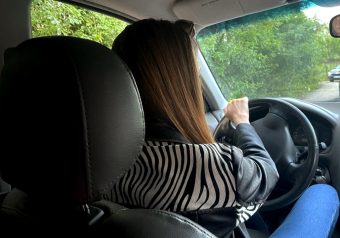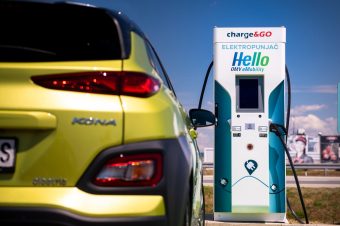
We hear more and more often that electric vehicles are our future, while some of us already consider it to be the present. However, as many divided opinions on the subject or potential reasons as to why they are not a realistic alternative to standard vehicles, there was no way to know the truth until I ventured out to gain first-hand experience. I haven’t had the opportunity to drive an electric car until now, so I decided to try it out and find out how things are going.
Considering the infrastructure in Serbia, I was worried about whether I could get to the very south of Serbia without any problems, where my destination was, and I was also concerned about the differences compared to the conventional car I was used to. The chosen route for my first test drive was Belgrade-Vranje.
A journey of about 350 kilometers was ahead of me, and I only knew that traveling by electric car required a bit of planning before the trip itself, primarily because of the locations of the electric chargers. I chose to drive a Hyundai Kona Electric with a battery capacity of 64 kilowatt hours. Planning a trip involves researching the infrastructure network of chargers, where there are two types – AC slow chargers and DC fast chargers.
IN FOCUS:
- MULTIPLE BENEFITS OF BIOGAS – FROM ENERGY TO FERTILIZER
- EMPOWERING CITIZENS TO BECOME PROSUMERS OF SOLAR ENERGY
- ELECTRIC POWER DISTRIBUTION OF SERBIA – CHALLENGES OF CONNECTING PROSUMERS TO THE POWER GRID
The difference between these chargers is primarily in the charging speed. DC chargers have a higher charging power, i.e. they charge faster, and their power can go up to 300 kilowatts, while AC chargers are up to 22 kilowatts at most and are mostly home chargers. They are also found in hotels and other facilities. I started from Zvezdara, where a Charge&GO charger in the Science and Technology Park is available to users of this complex.
The company that operates this charger has its network of electric chargers. In Belgrade, they have AC and DC chargers, and I found out that in Borča, they have a DC charger with a power of 75 kilowatts. Several OMV pumps in the city are waiting for the commissioning of higher-power DC chargers. That’s why I charged the car’s battery at the mentioned AC charger because it was the one closest to me and set off for Vranje. At 90 kilometers from Belgrade, I stopped at the Gazprom Petrol pump in Velika Plana to ensure I had enough electricity to get to the hotel in Vranje.

I topped up the battery, which was only 12 per cent dead by this point. In the same way as in a conventional car, fuel consumption is written in liters. In an electric car, you can monitor the electricity consumption on the dashboard, which was 17 kilowatts per 100 kilometers in my case. I noticed that driving on the open road is less economical than driving in the city, contrary to what we know about diesel and petrol cars.
Since there is not much braking on the highway, the Hyundai Kona drew more electricity, while in the city, where the brakes are frequent, the battery was replenished with each pedal press. This principle is called regenerative braking and means that the battery is discharged but also recovers energy by braking because the engine acts as a generator and produces electricity that is then returned to the battery. It would mean that there is some benefit from city traffic when you drive this car, which was extremely useful information for me.
Therefore, the range varies from 350 kilometers of driving on the open road up to twice the range if it is a question of city driving where there is always a lot of braking. In Velika Plana, I topped up the car to 95 per cent. Surely someone would ask me why I didn’t fully charge the battery when I was already connected to the charger, but there is a logical and economical answer.
There is a 50-kilowatt Charge&- GO DC charger at this location. Since I had over 80 per cent of the battery – it was recharged to less than 10 per cent in 20 minutes because the power used to charge the battery dropped to three kilowatts, which was quite slow. Crucial information for new e-drivers: an electric car is set up to 80 per cent of the battery at maximum power, of acceleration from which the electric one already starts its drive since it has much greater energy losses, such as combustion – as much as 70 per cent are losses. In contrast, an electric vehicle has 20 per cent losses, so it starts faster. Speaking of acceleration, you can reach a speed of 100 km/h in about seven seconds in this car. There is a possibility to set the cruise control, but also the limit. In the second variant, you can add gas, but only up to the speed you have limited. The factory car is set to a top speed of 177 km/h, but I haven’t tried that.
Read the story in the new issue of the Energy portal Magazine RENEWABLE ENERGY SOURCES



